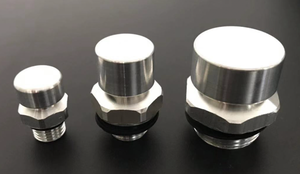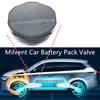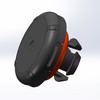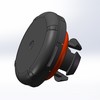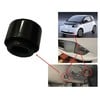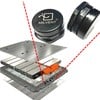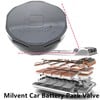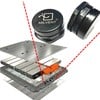Lithium ion power battery is widely used in electric vehicle energy storage system because of its high energy density and long cycle life. Battery cooling technologies include air cooling, liquid cooling, phase change material cooling and immersion cooling. The following applies 1D immersion battery cooling transient simulation model for DOE analysis. It mainly reflects the efficiency of modeling and simulation calculation of one-dimensional simulation analysis in the early stage of the concept project. It can effectively reduce the time of modeling and simulation with three-dimensional calculation, and its accuracy is consistent with three-dimensional simulation.
Model introduction
The battery cooling technology includes air cooling, liquid cooling and phase change medium cooling. This time, the immersion cooling is simulated and analyzed.
Immersion cooling means that the battery pack is in direct contact with the cooling liquid. By immersing the battery module in the liquid, the liquid can absorb the heat generated by the battery pack indiscriminately to achieve the physical cooling effect. Its cooling mode has the following advantages: high heat transfer performance and temperature uniformity, extended battery life, thermal runaway protection and rapid charging.
Geometric preparation and model building
Geometric treatment is carried out in SpaceClaim to divide the fluid domain and the cell. The cell is immersed in the insulating fluid, and the electrode directly contacts with the air for air cooling. The insulating fluid flows from the bottom of the battery to the top of the battery. For better cooling performance, the partition of the fluid domain makes the battery heat transfer even. The geometric model is simplified and discrete in GME3D.
After the model is discretized, it is modeled in GT-SUITE, including two fluid domains (electrode air cooling and battery edge fluid cooling). In the fluid domain, the flow and convection heat transfer can be simply equivalent by completing the equivalence of the flow passage baffle.
Battery condition
The battery model is established. The discharge curve and discharge rate of the model are constant, as shown in the figure below. Complete battery thermal management model modeling and calibrate the model. The initial state of the battery is as follows:
1.Initial SOC=1
2.Discharge Rate=3C
3.Initial Temperature=25 ?
4.Current=60A
5.Capacity of cell=20Ah
Result Calibration
The 1D simulation results of 3C discharge conditions are in good agreement with the experimental/3D CFD results, and the temperature gradient is close to the 3D CFD calculation results. The maximum error between the calculation results and 3D CFD calculation is 8%, and the results are well correlated.
Battery temperature distribution with different insulation coolant flow rates
Under 3C discharge condition, the temperature distribution inside the battery at the end of discharge at different coolant flow rates:
Under the same discharge condition, the influence of the coolant flow rate on the temperature of the battery is shown in the figure above. It can be seen that the maximum temperature occurs at the top right of the battery under different flow rates.
Electrode Temperature Distribution at Different Air Velocity
Considering the constant coolant flow rate of 1.54g/s, the cooling effect of air on electrodes at different wind speeds was investigated.
The influence of coolant flow rate on battery under different discharge depth
The change of maximum battery temperature under different discharge depths is shown in the figure below, and the coolant flow meeting the requirements is selected through optimization calculation.
